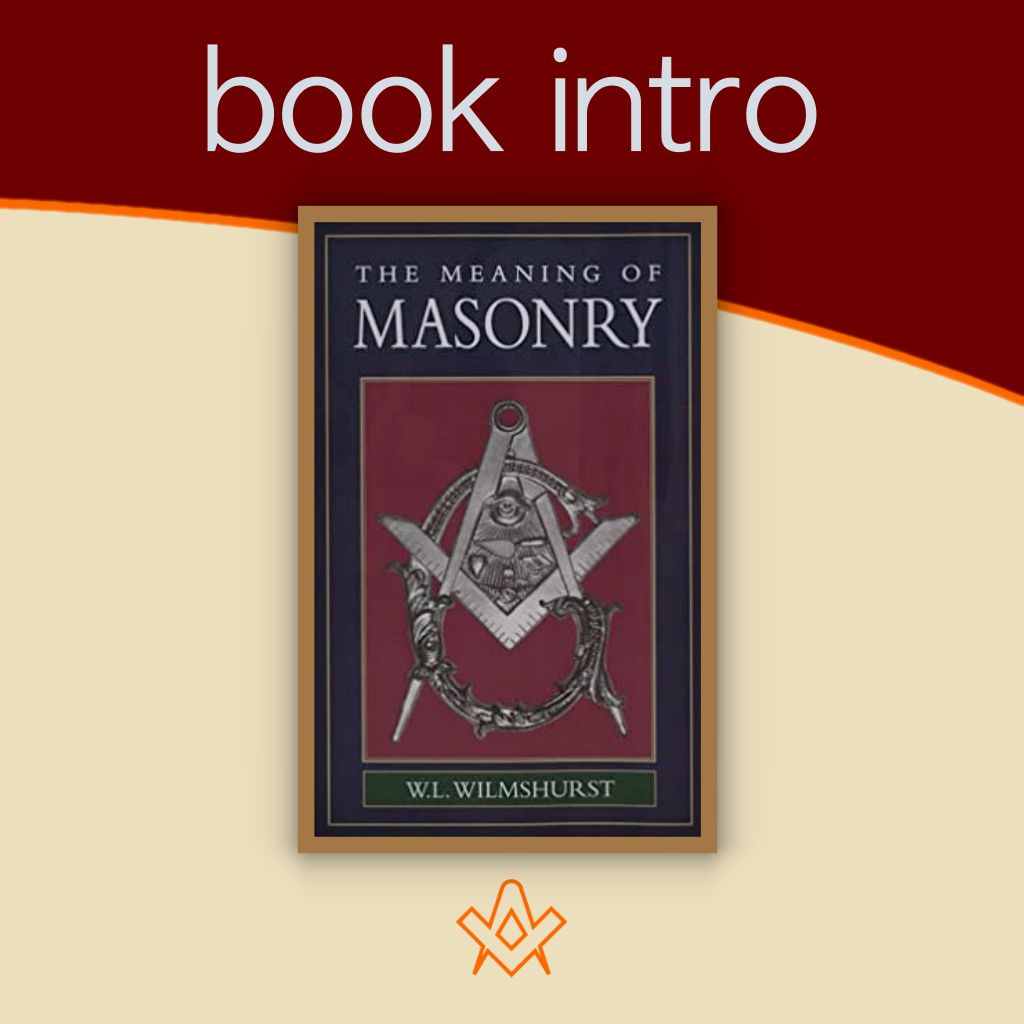This is the Introduction to The Meaning of Masonry, published in 1922, a set of essays which discuss the esoteric side of Masonry. The author, Walter Leslie Wilmshurst, (b. 1867, d. 1939) attempts to demonstrate that Masonry has a deeper meaning, specifically the striving for human perfection, and is firmly in the mainstream of traditional mystery teachings.
Introduction
THE papers here collected are written solely for members of the Masonic Order, constituted under the United Grand Lodge of England.
To all such they are offered in the best spirit of fraternity and goodwill and with the wish to render to the Order some small return for the profit the author has received from his association with it extending over thirty-two years.
They have been written with a view to promoting the deeper understanding of the meaning of Masonry; to providing the explanation of it that one constantly hears called for and that becomes all the more necessary in view of the unprecedented increase of interest in, and membership of, the Order at the present day.
The meaning of Masonry, however, is a subject usually left entirely unexpounded and that accordingly remains largely unrealized by its members save such few as make it their private study; the authorities of what in all other respects is an elaborately organized and admirably controlled community have hitherto made no provision for explaining and teaching the “noble science” which Masonry proclaims itself to be and was certainly designed to impart. It seems taken for granted that reception into the Order will automatically be accompanied by an ability to appreciate forthwith and at its full value all that one there finds.
The contrary is the case, for Masonry is a veiled and cryptic expression of the difficult science of spiritual life, and the understanding of it calls for special and informed guidance on the one hand, and on the other a genuine and earnest desire for knowledge and no small capacity for spiritual perception on the part of those seeking to be instructed; and not infrequently one finds Brethren discontinuing their interest or their membership because they find that Masonry means nothing to them and that no explanation or guidance is vouchsafed them.
Were such instruction provided, assimilated and responded to, the life of the Order would be enormously quickened and deepened and its efficiency as a means of Initiation intensified, whilst incidentally the fact would prove an added safeguard against the admission into the Order of unsuitable members—by which is meant not merely persons who fail to satisfy conventional qualifications, but also those who, whilst fitted in these respects, are as yet either so intellectually or spiritually unprogressed as to be incapable of benefiting from Initiation in its true sense although passing formally through Initiation rites.
Spiritual quality rather than numbers, ability to understand the Masonic system and reduce its implications into personal experience rather than the perfunctory conferment of its rites, are the desiderata of the Craft to-day.
As a contribution to repairing the absence of explanation referred to these papers have been compiled.
The first two of them have often been read as lectures at Lodge meetings. Many requests that they should be printed and made more widely available led to my expanding their subject-matter into greater detail than could be used for occasional lectures, and accordingly they are here amplified by a paper containing fuller notes upon Craft symbolism.
To complete the consideration of the Craft system it was necessary also to add a chapter upon that which forms the crown and culmination of the Craft Degrees and without which they would be imperfect—the Order of the Royal Arch.
Lastly a chapter has been added upon the important subject which forms the background of the rest—the relationship of modern Masonry to the Ancient Mysteries, from which it is the direct, though greatly attenuated, spiritual descendant.
Thus in the five papers I have sought to provide a survey of the whole Masonic subject as expressed by the Craft and Arch Degrees, which it is hoped may prove illuminating to the increasing number of Brethren who feel that Freemasonry enshrines something deeper and greater than, in the absence of guidance, they have been able to realize.
It does not profess to be more than an elementary and far from exhaustive survey; the subject might be treated much more fully, in more technical terminology and with abundant references to authorities, were one compiling a more ambitious and scholarly treatise.
But to the average Mason such a treatise would probably prove less serviceable than a summary expressed in as simple and untechnical terms as may be and unburdened by numerous literary references.
Some repetition, due to the papers having been written at different times, may be found in later chapters of points already dealt with in previous ones, though the restatement may be advantageous in emphasizing those points and maintaining continuity of exposition.
For reasons explained in the chapter itself, that on the Holy Royal Arch will probably prove difficult of comprehension by those unversed in the literature and psychology of religious mysticism; if so, the reading of it may be deferred or neglected.
But since a survey of the Masonic system would, like the system itself, be incomplete without reference to that supreme Degree, and since that Degree deals with matters of advanced psychological and spiritual experience about which explanation must always be difficult, the subject has been treated here with as much simplicity of statement as is possible and rather with a view to indicating to what great heights of spiritual attainment the Craft Degrees point as achievable, than with the expectation that they will be readily comprehended by readers without some measure of mystical experience and perhaps unfamiliar with the testimony of the mystics thereto.
Purposely these papers avoid dealing with matters of Craft history and of merely antiquarian or archæological interest.
Dates, particulars of Masonic constitutions, historical changes and developments in the external aspects of the Craft, references to old Lodges and the names of outstanding people connected therewith—these and such like matters can be read about elsewhere.
They are all subordinate to what alone is of vital moment and what so many Brethren are hungering for—knowledge of the spiritual purpose and lineage of the Order and the present-day value of rites of Initiation.
In giving these pages to publication care has been taken to observe due reticence in respect of essential matters.
The general nature of the Masonic system is, however, nowadays widely known to outsiders and easily ascertainable from many printed sources, whilst the large interest in and output of literature upon mystical religion and the science of the inward life during the last few years has familiarized many with a subject of which, as is shown in these papers, Masonry is but a specialized form.
To explain Masonry in general outline is, therefore, not to divulge a subject which is entirely exclusive to its members, but merely to show that Masonry stands in line with other doctrinal systems inculcating the same principles and to which no secrecy attaches, and that it is a specialized and highly effective method of inculcating those principles.
Truth, whether as expressed in Masonry or otherwise, is at all times an open secret, but is as a pillar of light to those able to receive and profit by it, and to all others but one of darkness and unintelligibility.
An elementary and formal secrecy is requisite as a practical precaution against the intrusion of improper persons and for preventing profanation.
In other respects the vital secrets of life, and of any system expounding life, protect themselves even though shouted from the housetops, because they mean nothing to those as yet unqualified for the knowledge and unready to identify themselves with it by incorporating it into their habitual thought and conduct.
In view of the great spread and popularity of Masonry to-day—when there are some three thousand Lodges in Great Britain alone [7175 lodges UGLE Quarterly Communications March 2020] — it is as well to consider its present bearings and tendencies and to give a thought to future possibilities.
The Order is a semi-secret, semi-public institution; secret in respect of its activities intra mœnia, but otherwise of full public notoriety, with its doors open to any applicant for admission who is of ordinary good character and repute.
Those who enter it, as the majority do, entirely ignorant of what they will find there, usually because they have friends there or know Masonry to be an institution devoted to high ideals and benevolence and with which it may be socially desirable to be connected, may or may not be attracted and profit by what is disclosed to them, and may or may not see anything beyond the bare form of the symbol or hear anything beyond the mere letter of the word.
Their admission is quite a lottery; their Initiation too often remains but a formality, not an actual awakening into an order and quality of life previously unexperienced; their membership, unless such an awakening eventually ensues from the careful study and faithful practice of the Order’s teaching, has little, if any, greater influence upon them than would ensue from their joining a purely social club.
For “Initiation”—for which there are so many candidates little conscious of what is implied in that for which they ask—what does it really mean and intend?
It means a new beginning (initium); a break-away from an old method and order of life and the entrance upon a new one of larger self-knowledge, deepened understanding and intensified virtue.
It means a transition from the merely natural state and standards of life towards a regenerate and super-natural state and standard.
It means a turning away from the pursuit of the popular ideals of the outer world, in the conviction that those ideals are but shadows, images and temporal substitutions for the eternal Reality that underlies them, to the keen and undivertible quest of that Reality itself and the recovery of those genuine secrets of our being which lie buried and hidden at “the centre” or innermost part of our souls.
It means the awakening of those hitherto dormant higher faculties of the soul which endue their possessor with “light” in the form of new enhanced consciousness and enlarged perceptive faculty.
And lastly, in words with which every Mason is familiar, it means that the postulant will henceforth dedicate and devote his life to the Divine rather than to his own or any other service, so that by the principles of the Order he may be the better enabled to display that beauty of godliness which previously perhaps has not manifested through him.
To comply with this definition of Initiation—which it might be useful to apply as a test not only to those who seek for admission into the Order, but to ourselves who are already within it—it is obvious that special qualifications of mind and intention are essential in a candidate of the type likely to be benefited by the Order in the way that its doctrine contemplates, and that it is not necessarily the ordinary man of the world, personal friend and good fellow though he be according to usual social standards, who is either properly prepared for, or likely to benefit in any vital sense by, reception into it.
The true candidate must indeed needs be, as the word candidus implies, a “white man,” white within as symbolically he is white-vestured without, so that no inward stain or soilure may obstruct the dawn within his soul of that Light which he professes to be the predominant wish of his heart on asking for admission; whilst, if really desirous of learning the secrets and mysteries of his own being, he must be prepared to divest himself of all past preconceptions and thought-habits and, with childlike meekness and docility, surrender his mind to the reception of some perhaps novel and unexpected truths which Initiation promises to impart and which will more and more unfold and justify themselves within those, and those only, who are, and continue to keep themselves, properly prepared for them.
“Know thyself!” was the injunction inscribed over the portals of ancient temples of Initiation, for with that knowledge was promised the knowledge of all secrets and all mysteries.
And Masonry was designed to teach self-knowledge. But self-knowledge involves a knowledge much deeper, vaster and more difficult than is popularly conceived.
It is not to be acquired by the formal passage through three or four degrees in as many months; it is a knowledge impossible of full achievement until knowledge of every other kind has been laid aside and a difficult path of life long and strenuously pursued that alone fits and leads its followers to its attainment.
The wisest and most advanced of us is perhaps still but an Entered Apprentice at this knowledge, however high his titular rank.
Here and there may be one worthy of being hailed as a Fellow-Craft in the true sense.
The full Master-Mason—the just man made perfect who has actually and not merely ceremonially travelled the entire path, endured all its tests and ordeals, and become raised into conscious union with the Author and Giver of Life and able to mediate and impart that life to others—is at all times hard to find.
So high, so ideal an attainment, it may be urged, is beyond our reach; we are but ordinary men of the world sufficiently occupied already with our primary civic, social and family obligations and following the obvious normal path of natural life! Granted.
Nevertheless to point to that attainment as possible to us and as our destiny, to indicate that path of self-perfecting to those who care and dare to follow it, modern Speculative Masonry was instituted, and to emphasizing the fact these papers are devoted.
For Masonry means this or it means nothing worth the serious pursuit of thoughtful men; nothing that cannot be pursued as well outside the Craft as within it.
It proclaims the fact that there exists a higher and more secret path of life than that which we normally tread, and that when the outer world and its pursuits and rewards lose their attractiveness for us and prove insufficient to our deeper needs, as sooner or later they will, we are compelled to turn back upon ourselves, to seek and knock at the door of a world within; and it is upon this inner world, and the path to and through it, that Masonry promises light, charts the way, and indicates the qualifications and conditions of progress.
This is the sole aim and intention of Masonry.
Behind its more elementary and obvious symbolism, behind its counsels to virtue and conventional morality, behind the platitudes and sententious phraseology (which nowadays might well be subjected to competent and intelligent revision) with which, after the fashion of their day, the eighteenth-century compilers of its ceremonies clothed its teaching, there exists the framework of a scheme of initiation into that higher path of life where alone the secrets and mysteries of our being are to be learned; a scheme moreover that, as will be shown later in these pages, reproduces for the modern world the main features of the Ancient Mysteries, and that has been well described by a learned writer on the subject as “an epitome or reflection at a far distance of the once universal science.”
But because, for long and for many, Masonry has meant less than this, it has not as yet fulfilled its original purpose of being the efficient initiating instrument it was designed to be; its energies have been diverted from its true instructional purpose into social and philanthropic channels, excellent in their way, but foreign to and accretions upon the primal main intention.
Indeed, so little perceived or appreciated is that central intention that one frequently hears it confessed by men of eminent position in the Craft and warm devotion to it that only their interest in its great charitable institutions keeps alive their connection with the Order.
Relief is indeed a duty incumbent upon a Mason, but its Masonic interpretation is not meant to be limited to physical necessities.
The spiritually as well as the financially poor and distressed are always with us and to the former, equally with the latter, Masonry was designed to minister.
Theoretically every man upon reception into the Craft acknowledges himself as within the category of the spiritually poor, and as content to renounce all temporal riches if haply by that sacrifice his hungry heart may be filled with those good things which money cannot purchase, but to which the truly initiated can help him.
But if Masonry has not as yet fulfilled its primary purpose and, though engaged in admirable secondary activities, is as yet an initiating instrument of low efficiency, it may be that, with enlarged understanding of its designs, that efficiency may yet become very considerably increased.
During the last two centuries the Craft has been gradually developing from small and crude beginnings into its present vast and highly elaborated organization.
To-day the number of Lodges and the membership of the Craft are increasing beyond all precedent.
One asks oneself what this growing interest portends, and to what it will, or can be made to, lead?
The growth synchronizes with a corresponding defection of interest in orthodox religion and public worship.
It need not now be enquired whether or to what extent the simple principles of faith and the humanitarian ideals of Masonry are with some men taking the place of the theology offered in the various Churches; it is probable that to some extent they do so.
But the fact is with us that the ideals of the Masonic Order are making a wide appeal to the best instincts of large numbers of men and that the Order has imperceptibly become the greatest social institution in the Empire. Its principles of faith and ethics are simple, and of virtually universal acceptance.
Providing means for the expression of universal fraternity under a common Divine Fatherhood and of a common loyalty to the headship and established government of the State, it leaves room for divergences of private belief and view upon matters upon which unity is impracticable and perhaps undesirable.
It is utterly clean of politics and political intrigue, but nevertheless has unconsciously become a real, though unobtrusive, asset of political value, both in stabilizing the social fabric and tending to foster international amity.
The elaborateness of its organization, the care and admirable control of its affairs by its higher authorities, are praiseworthy in the extreme, whilst in the conduct of its individual Lodges there has been and is a progressive endeavour to raise the standard of ceremonial work to a far higher degree of reverence and intelligence than was perhaps possible under conditions existing not long ago.
The Masonic Craft has grown and ramified to dimensions undreamed of by its original founders and, at its present rate of increase, its potentialities and influence in the future are quite incalculable.
What seems now needed to intensify the worth and usefulness of this great Brotherhood is to deepen its understanding of its own system, to educate its members in the deeper meaning and true purpose of its rites and its philosophy.
Were this achieved the Masonic Order would become, in proportion to that achievement, a spiritual force greater than it can ever be so long as it continues content with a formal and unintelligent perpetuation of rites, the real and sacred purpose of which remains largely unperceived, and participation in which too often means nothing more than association with an agreeable, semi-religious, social institution.
Carried to its fullest, that achievement would involve the revival, in a form adapted to modern conditions, of the ancient Wisdom-teaching and the practice of those Mysteries which became proscribed fifteen centuries ago, but of which modern Masonry is the direct and representative descendant, as will appear later in these pages.
The future development and the value of the Order as a moral force in society depend, therefore, upon the view its members take of their system.
If they do not spiritualize it they will but increasingly materialize it. If they fail to interpret its veiled purport, to enter into the understanding of its underlying philosophy, and to translate its symbolism into what is signified thereby, they will be mistaking shadow for substance, a husk for the kernel, and secularizing what was designed as a means of spiritual instruction and grace.
It is from lack of instruction rather than of desire to learn the meaning of Masonry that the Craft suffers to-day.
But, as one finds everywhere, that desire exists; and so, for what they may be worth, these papers are offered to the Craft as a contribution towards satisfying it.
Let me conclude with an apologue and an aspiration.
In the Chronicles of Israel it may be read how that, after long preparatory labour, after employing the choicest material and the most skilful artificers, Solomon the King at last made an end of building and beautifying his Temple, and dedicated to the service of the Most High that work of his hands in a state as perfect as human provision could make it; and how that then, but not till then, his offering was accepted and the acceptance was signified by a Divine descent upon it so that the glory of the Lord shone through and filled the whole house.
So—if we will have it so—may it be with the temple of the Masonic Order.
Since the inception of Speculative Masonry it has been a-building and expanding now these last three hundred years.
Fashioned of living stones into a far-reaching organic structure; brought gradually, under the good guidance of its rulers, to high perfection on its temporal side and in respect of its external observances, and made available for high purposes and giving godly witness in a dark and troubled world; upon these preliminary efforts let there now be invoked this crowning and completing blessing—that the Spirit of Wisdom and Understanding may descend upon the work of our hands in abundant measure, prospering it still farther, and filling and transfiguring our whole Masonic house.
Article by: W L Wilmshurst
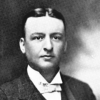
Walter Leslie Wilmshurst, (b. 1867, d. 1939) was initiated as a Mason in the Huddersfield lodge in 1889
He was an English author and Freemason. He published four books on English Freemasonry and submitted articles to The Occult Review Magazine
He was one of the greatest thinkers about Freemasonry in the 20th century.

The Meaning of Masonry
By W.L. WILMSHURST
Although the Freemasons number over six million members worldwide, they are a very secretive organization. the general public today thinks of them as a social fraternity like the Rotary Club, but that is hardly the whole truth.
By mysterious coincidence, it seems, many Masons have been major figures in modern history. Many of the Founding Fathers of the United States—including George Washington, Thomas Jefferson, Benjamin Franklin, and Paul Revere—were Freemasons.
Giuseppe Garibaldi, the Italian freedom fighter, was also one, as were the composers Franz Joseph Haydn and Wolfgang Amadeus Mozart and writers François Marie Arouet de Voltaire and Johann Wolfgang von Goethe.
The Meaning of Masonry explores the beliefs behind the order, its cryptic rites and symbols, and uncovers its ultimate purpose.
Recent Articles: in this series
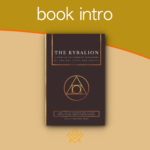 Unravel the secrets of the ancient Egyptian wisdom with our comprehensive guide to the Kybalion, by Three Initiates. Discover its influence on modern thought, the controversies surrounding it, and its seven profound Hermetic principles. Unlock the power of these timeless teachings to transform your understanding of life's mysteries. |
 Book Intro - The Working Tools of an Old York Master by Wilmshurst Unlock the Secrets of Freemasonry! Dive into the profound symbolism of 'The Working Tools of an Old York Master.' Discover the hidden meanings behind the square, compass, plumb line, and more. Embark on a transformative journey of personal growth and spiritual enlightenment. Uncover the ancient wisdom that has shaped generations of Masons. |
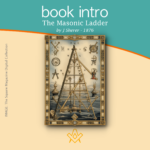 Book Intro - The Masonic Ladder by J Sherer Unlock the mysteries of Freemasonry with "The Masonic Ladder" by J. Sherer - - 1876. This 19th-century guidebook takes readers on a journey through the steps of the Masonic ladder, from the basic principles of the Entered Apprentice to the highest degree of the Sovereign Grand Inspector General. Discover the symbolism, allegory, and values of Freemasonry in this timeless classic. |
 Book Intro - The London mason in the seventeenth century The London Mason in the Seventeenth Century by Douglas Knoop offers a comprehensive examination of the lives and work of masons in the bustling city of London during the seventeenth century. The book delves into the intricacies of their craft, the socioeconomic and political forces that influenced their profession, and the role they played in shaping the architectural landscape of London. |
 Book Intro - History of Freemasonry, Gould, Robert Freke The History of Freemasonry is a comprehensive overview of the origins, development, and evolution of Freemasonry from its ancient roots to the modern era. The book explores the fascinating history of one of the oldest and most mysterious organisations in the world, which has been the subject of much speculation and curiosity over the centuries. - by Robert Freke Gould |
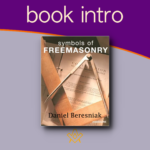 Book Intro - Daniel Beresniak Symbols Of Freemasonry This book is a collection of the symbolic images which Freemasons encounter on their journeys of transformation.' The texts and illustrations form an intimate dialogue whose subject is Freemasonry, and which casts light on the relationship between dreams and reality, reason, intuition and imagination. |
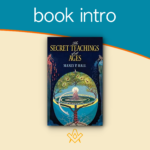 Book Intro - The Secret Teachings of All Ages by Manly P Hall The Secret Teachings of All Ages by Manly P Hall is a comprehensive and in-depth exploration of the various esoteric and occult traditions that have shaped human history. The book covers a wide range of subjects including alchemy, astrology, mysticism, and secret societies, and provides detailed explanations of the underlying principles and concepts. |
 Book Intro - Duncan's Masonic Ritual and Monitor Duncan's Masonic Ritual and Monitor is an impression of the Old York Rite published in New York in 1866. |
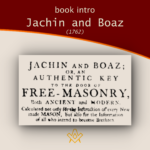 Book Intro - Jachin and Boaz (1762) Thirty two years after Samuel Prichard's Masonry Dissected (1730) a second detailed exposure was published Jachin and Boaz (1762) attributed to the same author, and met with equal distain by Freemasons of the time. However, these exposures offer the masonic historian an invaluable view in to how freemasonry was conducted during its early formation |
 Book Intro - Three Distinct Knocks (c.1760) Giving an exact account of all their proceedings in making a brother, with the three obligations or oaths belonging to the first second, and third degrees of masonry, viz. The entered apprentice, fellow-craft, and master-mason: with the obligating on belonging to the chair, and the grip and word. |
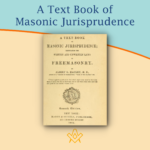 Book Intro - A Text Book of Masonic Jurisprudence An introduction to Albert Mackey's seminal work on Masonic Jurisprudence – the theory or philosophy of Masonic law. The Foundations of Masonic Law are to be found in the Landmarks, or Unwritten Law, and in the Ancient Constitutions, or the Written Law. These constitute the subject matter of the book. |
 Book Intro - The Perfect Ceremonies Of Craft Masonry 1871 A beautiful example of a the rituals, produced in a Medieval illuminated script style. Facsimiles still exist of this illustrated ritual book, of which the most authentically produced version is that available from the Scottish Rite Masonic Book Club. |
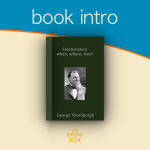 Book Intro – Freemasonry; when, where, how? Introduction to Freemasonry; when, where, how? By George Thornburgh |
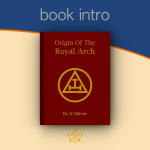 Book Intro - Origin Of The Royal Arch An introduction to the Origin of the Royal Arch, through the eyes of the English nineteenth century masonic author Dr G Oliver (1782–1867) |
 Book Intro – Symbolical Masonry Symbolical Masonry is a treasure-house of Masonic lore, including discussions of key concepts of the first three degrees, along with an extensive study guide. |
 This month we look at – 'A portrait gallery, with biographical sketches of prominent freemasons throughout the United States' |
 Extracted and abridged from The Mystic Tie: Or, Facts and Opinions, Illustrative of the Character and Tendency of Freemasonry By Albert Mackey, |
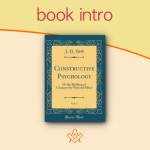 Book intro - Constructive Psychology The introduction to Constructive Psychology or The Building Of Character By Personal Effort by J D Buck a masonic author |
 book intro - Cagliostro: the splendour and misery of a master of magic Preface to the book by William Rutherford Hayes; Cagliostro: the splendour and misery of a master of magic |
 book intro - Origin of the Rosicrucians and the Free-Masons Historico-Critical Inquiry into the Origin of the Rosicrucians and the Free-Masons – Thomas De Quincey |
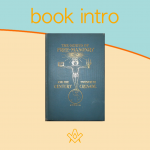 Book Intro - The Genius of Freemasonry The Genius of Freemasonry: “Has any brother anything to offer for the good of Masonry?” The following pages are the author’s answer to that question. |
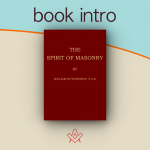 Book Intro - The Spirit of Masonry An essential source for anyone interested in exploring the inner mysteries of the Masonic Fraternity. |
 Book intro - History of Freemasonry Introduction to a classic masonic book by J. G. Findel, History of Freemasonry published 1866 |
 The Book of Constitutions for the Ancient Grand Lodge or Ahiman Rezon |
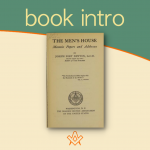 A short introduction to The Men's House, a collection of masonic papers and addresses |
 This is a general survey of Masonic origins, history and philosophy. It was at one time given to every new Mason in Iowa. |
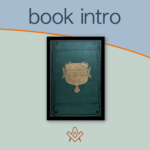 Book Intro - The Discrepancies of Freemasonry Written almost 150 years ago, this book contains wisdom still relevant today. |
 Book Intro - The Principles of Masonic Law "The first great duty, not only of every lodge, but of every Mason, is to see that the landmarks of the Order shall never be impaired". |
 Published in 1911, this fascinating book is equally relevant for the 21st century Mason with an interest in the more mystical side of Freemasonry. |
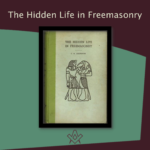 Book Intro - Hidden Life of Freemasonry Introduction to The Hidden Life in Freemasonry (1926) by Charles Webster Leadbeater |
 Book Intro - The Symbolism of Freemasonry Introduction to a classic masonic book; The Symbolism of Freemasonry: Illustrating and Explaining Its Science and Philosophy, its Legends, Myths and Symbols. |
 Book Intro - The Meaning of Masonry This is the Introduction to The Meaning of Masonry, a set of essays which discuss the esoteric side of Masonry |
 Book Intro - Illustrations of Masonry Introduction to Illustrations Of Masonry by William Preston (1742-1818) |
Recent Articles: Esoteric series
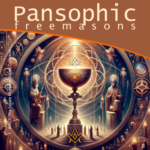 Unveil the secrets of Pansophic Freemasonry, a transformative journey through the ancient mystical traditions. Delve into the sacred realms of Rosicrucianism, Templar wisdom, Kabbalah, Gnosticism, and more. Discover the Graal, the sacred Grail that connects all esoteric paths. Embrace a holistic spiritual quest that reveals the profound mysteries of self and the universe. |
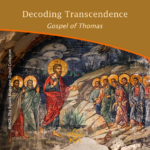 Dive into a spiritual journey where self-awareness is the key to enlightenment. The Gospel of Thomas and Masonic teachings converge on the profound truth that the path to transcendent wisdom lies within us. Embrace a diversified understanding of spirituality, emphasizing introspection as the gateway to a universally respected enlightenment. Explore, understand, transcend. |
 Philosophy the Science of Estimating Values Philosophy is the science of estimating values. The superiority of any state or substance over another is determined by philosophy. By assigning a position of primary importance to what remains when all that is secondary has been removed, philosophy thus becomes the true index of priority or emphasis in the realm of speculative thought. The mission of philosophy a priori is to establish the relation of manifested things to their invisible ultimate cause or nature. |
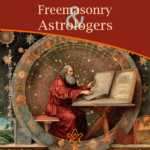 Unlocking the Mysteries: The Surprising Connection Between Freemasonry and Astrologers Revealed! Delve into the intriguing world of Freemasonry and explore its ties to astrological practices. Discover how these two distinct realms intersect, offering a fascinating glimpse into the esoteric interests of some Freemasons. Uncover the hidden links and unravel the enigmatic bond between Freemasonry and astrologers! |
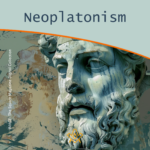 Neoplatonism, a philosophy with profound influence from the 3rd to the 6th century, merges Platonic ideals with Eastern thought, shaping Western and Middle-Eastern philosophy for two millennia. It emphasizes the unity of the individual with the supreme 'One', blending philosophy with theology and impacting major religious and philosophical movements, including Christianity and Islam. |
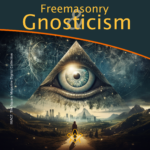 The enigmatic allure of Freemasonry's ancient rituals and Gnosticism's search for hidden knowledge capture the human spirit's endless quest for enlightenment. Between the stonemason's square and the Gnostic's divine spark lies a tantalizing intersection of philosophy, spirituality, and the pursuit of esoteric wisdom. Both traditions beckon with the promise of deeper understanding and moral elevation, inviting those who are drawn to unravel the tapestries of symbols and allegories. Whether through the fellowship of the lodge or the introspective journey of the soul, the paths of Freemasonry and Gnosticism represent a yearning to connect with something greater than ourselves—an impulse as old as time and as compelling as the mysteries they guard. |
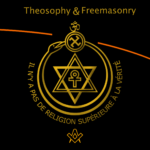 Embark on a journey through time and spirituality with our in-depth exploration of the Theosophical Society's Seal. This ancient emblem, rich with symbols, bridges humanity with the cosmos, echoing through the world's great faiths and diverse cultures. Our paper delves into the six mystical symbols, untangling their profound meanings and tracing their presence in historic art worldwide. Unaffiliated with worldly movements, these symbols open a window to esoteric wisdom. We also probe potential parallels with Freemasonry, seeking threads that might connect these storied organizations. Join us in unveiling the universal language of the spirit encoded within this enigmatic Seal. |
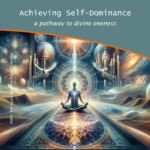 Discover the pathway to divine oneness through the concept of self-dominance. This thought-provoking essay explores the profound connection between self-control, spiritual growth, and achieving unity with the divine essence. With an interdisciplinary approach, it offers practical steps towards expanding consciousness and deepening our understanding of the divine. |
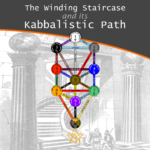 The Winding Staircase and its Kabbalistic Path The Winding Staircase in freemasonry is a renowned symbol of enlightenment. In this article, we explore its connection to Kabbalistic thought and how it mirrors the inner growth of a candidate as he progresses throughout his Masonic journey. From faith and discipline in Binah, to strength and discernment in Geburah, and finally to victory and emotional intuition in Netzach, each step represents a crucial aspect of personal development. Join us as we delve into the esoteric meanings of this powerful symbol. |
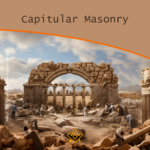 Unravel the mystic origins of Capitular Masonry, a secretive Freemasonry branch. Explore its evolution, symbolic degrees, and the Royal Arch's mysteries. Discover the Keystone's significance in this enlightening journey through Masonic wisdom, culminating in the ethereal Holy Royal Arch. |
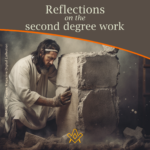 Reflections on the Second Degree Work Bro. Draško Miletić offers his reflections on his Second Degree Work – using metaphor, allegory and symbolism to understand the challenges we face as a Fellow Craft Mason to perfect the rough ashlar. |
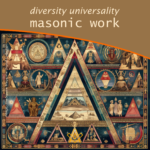 Diversity and Universality of Masonic Work Explore the rich tapestry of Masonic work, a testament to diversity and universality. Uncover its evolution through the 18th century, from the stabilization of Symbolic Freemasonry to the advent of Scottish rite and the birth of Great Continental Rites. Dive into this fascinating journey of Masonic systems, a unique blend of tradition and innovation. Antonio Jorge explores the diversity and universality of Masonic Work |
 Nonsense as a Factor in Soul Growth Although written 100 years ago, this article on retaining humour as a means of self-development and soul growth is as pertinent today as it was then! Let us remember the words of an ancient philosopher who said, when referring to the court jester of a king, “It takes the brightest man in all the land to make the greatest fool.” |
 Freemasonry: The Robe of Blue and Gold Three Fates weave this living garment and man himself is the creator of his fates. The triple thread of thought, action, and desire binds him when he enters into the sacred place or seeks admittance to the Lodge, but later this same cord is woven into the wedding garment whose purified folds shroud the sacred spark of his being. - Manly P Hall |
 By such a prudent and well regulated course of discipline as may best conduce to the preservation of your corporal and metal faculties in the fullest energy, thereby enabling you to exercise those talents wherewith god has blessed you to his glory and the welfare of your fellow creatures. |
 Jacob Ernst's 1870 treatise on the Philosophy of Freemasonry - The theory of Freemasonry is based upon the practice of virtuous principles, inculcating the highest standard of moral excellence. |
 Alchemy, like Freemasonry, has two aspects, material and spiritual; the lower aspect being looked upon by initiates as symbolic of the higher. “Gold” is used as a symbol of perfection and the earlier traces of Alchemy are philosophical. A Lecture read before the Albert Edward Rose Croix Chapter No. 87 in 1949. by Ill. Bro. S. H. Perry 32° |
 The spirit of the Renaissance is long gone and today's globalized and hesitant man, no matter ideology and confession, is the one that is deprived of resoluteness, of decision making, the one whose opinion doesn't matter. Article by Draško Miletić, |
 A Mason's Work in the First Degree Every Mason's experiences are unique - here writer and artist Draško Miletić shares insights from his First Degree Work. |
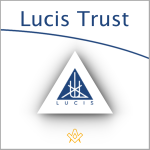 Initiation and the Lucis Trust The approach of the Lucis Trust to initiation may differ slightly to other Western Esoteric systems and Freemasonry, but the foundation of training for the neophyte to build good moral character and act in useful service to humanity is universal. |
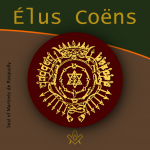 Who were the mysterious 18th century Élus Coëns – a.k.a The Order of Knight-Masons Elect Priests of the Universe – and why did they influence so many other esoteric and para-Masonic Orders? |
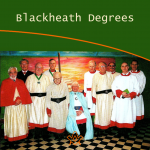 Bro. Chris Hatton gives us his personal reflections on the history of the 'house at Blackheath and the Blackheath Orders', in this wonderful tribute to Andrew Stephenson, a remarkable man and Mason. |
 Book Review - Cagliostro the Unknown Master The book review of the Cagliostro the Unknown Master, by the Editor of the book |
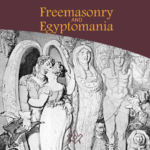 We explore fascinating and somewhat contentious historical interpretations that Freemasonry originated in ancient Egypt. |
 Is Freemasonry esoteric? Yes, no, maybe! |
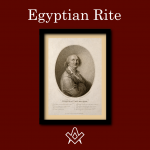 Egyptian Freemasonry, founder Cagliostro was famed throughout eighteenth century Europe for his reputation as a healer and alchemist |
masonic knowledge
to be a better citizen of the world
share the square with two brothers

click image to open email app on mobile device
